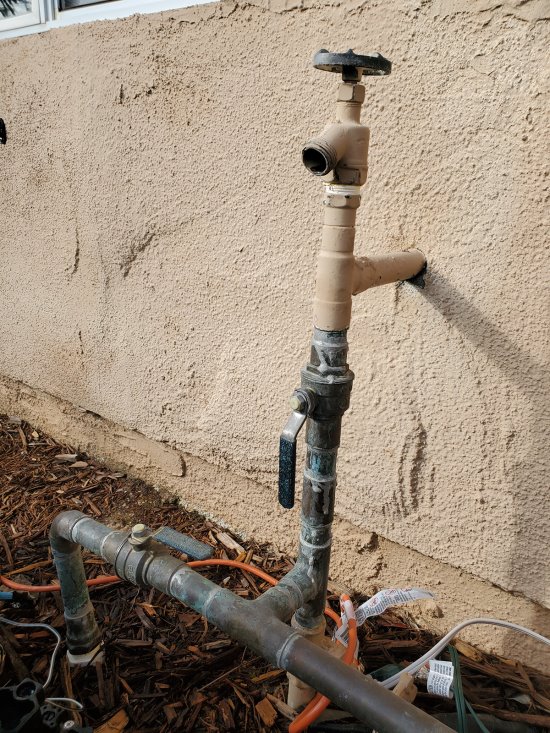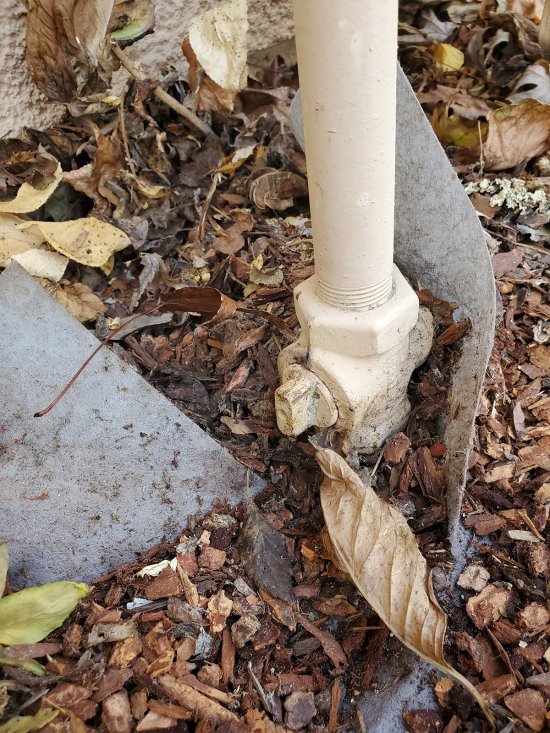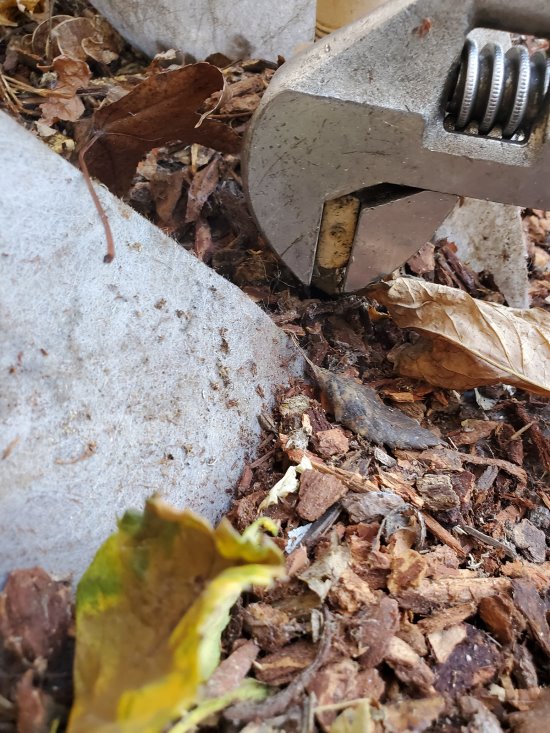| | Published February 16th, 2022
| New home primer, Part 1
| | By Jim Hurley | |  | | Water shutoff valves on the outside of a house Photos Jim Hurley |
As a handyman, it is always a pleasure to help a new homeowner get settled. Typically, the request is to install some towel bars and hang artwork, or maybe adjust some doors that don't latch. Being old, and a dad at heart, I like to include my "New Home Primer" on that first visit.
 What's in the primer? So glad you asked.
What's in the primer? So glad you asked.
 First, I ask if they know where the main water shutoff valve is. If the answer is "no," we walk around outside to find it. Typically, that water main shutoff is right out front. It may be near the garage door, or possibly in the garden by the front door; you'll see a pipe coming up from the ground with a valve in it that goes into the wall of the house.
First, I ask if they know where the main water shutoff valve is. If the answer is "no," we walk around outside to find it. Typically, that water main shutoff is right out front. It may be near the garage door, or possibly in the garden by the front door; you'll see a pipe coming up from the ground with a valve in it that goes into the wall of the house.
 Sometimes that main is not so easy to find. On older homes, they might be buried under several decades of garden soil buildup. On rare occasions, I've found the valve inside the garage. If the main shutoff is not visible, I look for the meter box on the street. The water meter has a shutoff valve also, but it is much more difficult to access and shut off. Finding the meter box may help locate the main shutoff because typically the water main runs in a straight line of sight from the meter at the street to the closest point of the house. (Plumbers like to use as little pipe as possible.) If we still can't find the main water shutoff at the house, the water district will come out to help you locate it.
Sometimes that main is not so easy to find. On older homes, they might be buried under several decades of garden soil buildup. On rare occasions, I've found the valve inside the garage. If the main shutoff is not visible, I look for the meter box on the street. The water meter has a shutoff valve also, but it is much more difficult to access and shut off. Finding the meter box may help locate the main shutoff because typically the water main runs in a straight line of sight from the meter at the street to the closest point of the house. (Plumbers like to use as little pipe as possible.) If we still can't find the main water shutoff at the house, the water district will come out to help you locate it.
 Sometimes finding the main shutoff is not the end of it. Many homes have the water main split with one line to run the irrigation system (what we used to call sprinklers), and the other supplying water to the house. It is good to test which valve does what before an emergency and possibly label the valves once you know which is which.
Sometimes finding the main shutoff is not the end of it. Many homes have the water main split with one line to run the irrigation system (what we used to call sprinklers), and the other supplying water to the house. It is good to test which valve does what before an emergency and possibly label the valves once you know which is which.
 Why is that main water shutoff valve so important? Because on very rare occasions (think earthquakes) a water line might break causing an unrestricted flow of water. If this should happen, your first response must be to go to the main valve (which you fortunately had the forethought to locate) and turn it off. Once the free flow of water is stopped, mopping up and repairs can be done.
Why is that main water shutoff valve so important? Because on very rare occasions (think earthquakes) a water line might break causing an unrestricted flow of water. If this should happen, your first response must be to go to the main valve (which you fortunately had the forethought to locate) and turn it off. Once the free flow of water is stopped, mopping up and repairs can be done.
 Of equal importance, the second stop on our homeowner's tour is the gas meter. The gas main has an inconspicuous valve in the pipe that feeds into your gas meter. Instead of a handle to turn, gas main valves have a rectangular stem on one side and a nut on the other. The long side of the stem will align with the pipe when it is open and is perpendicular to the pipe when it is closed.
Of equal importance, the second stop on our homeowner's tour is the gas meter. The gas main has an inconspicuous valve in the pipe that feeds into your gas meter. Instead of a handle to turn, gas main valves have a rectangular stem on one side and a nut on the other. The long side of the stem will align with the pipe when it is open and is perpendicular to the pipe when it is closed.
 To shut off your gas main, you provide the handle. The hardware store sells a flat bar shutoff wrench to keep near your gas meter for emergency use: Don't buy it. Instead I recommend spending your money on a really big (at least 12-inch long) crescent wrench. The flat bar is short and thin and hurts your hand when you try to push on it. The long crescent wrench is more comfortable for your hand and gives you more leverage for turning the valve. Find a spot near the meter where you can leave the wrench, (maybe on a hook on the wall), so it is there when you need it.
To shut off your gas main, you provide the handle. The hardware store sells a flat bar shutoff wrench to keep near your gas meter for emergency use: Don't buy it. Instead I recommend spending your money on a really big (at least 12-inch long) crescent wrench. The flat bar is short and thin and hurts your hand when you try to push on it. The long crescent wrench is more comfortable for your hand and gives you more leverage for turning the valve. Find a spot near the meter where you can leave the wrench, (maybe on a hook on the wall), so it is there when you need it.
 The gas main valve can be very difficult to turn off, not something you want to find out in an emergency. I strongly advise practicing shutting it off before there is an emergency. If you turn it off and back on quickly there will be no problem. If you can't turn it off, call PG&E. They provide a free safety check service to residences. If it remains off for too long, you may need to relight the pilot light on your water heater.
The gas main valve can be very difficult to turn off, not something you want to find out in an emergency. I strongly advise practicing shutting it off before there is an emergency. If you turn it off and back on quickly there will be no problem. If you can't turn it off, call PG&E. They provide a free safety check service to residences. If it remains off for too long, you may need to relight the pilot light on your water heater.
 What about water heaters and electrical panels you ask? Watch for Part 2 of the New Home Primer in an upcoming edition of Lamorinda Weekly.
What about water heaters and electrical panels you ask? Watch for Part 2 of the New Home Primer in an upcoming edition of Lamorinda Weekly. |
 | | Gas shutoff valves Photos Jim Hurley |  | | Gas shutoff valves can be closed with a wrench Photos Jim Hurley |  | | Jim Hurley is an independent handyman with over 25 years of experience in residential repairs. Hopefully this free advice is helpful to someone attempting Do-It-Yourself home repairs. The information presented is intended for informational purposes and for use by persons having appropriate technical skill, at their own discretion and risk. | | | | | | | |







